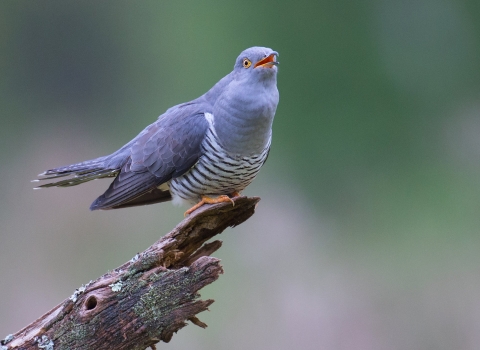The problem with tuning in to birdsong is that once you can do it, you can’t not do it. Suddenly everywhere you go birds are talking to you, and your inner monologue is ticking them off your list for the day. Learning birdsong is a bit like learning how the different instruments in an orchestra sound, you’re listening to timbre, rhythm and pitch rather than the actual melodies, though each bird species does have its own favourite air to sing.
The wood pigeons provide the bass, the chiffchaff and great tits are the violins, the robin plays the flute and the blackbird the clarinet, with occasional blasts from the wren-piccolo, and of course some percussion from the great spotted woodpecker.
Waking up early for the spring dawn chorus is a wonderful thing, but if you know your birdsong it’s a bit like walking in to an orchestral rehearsal where each musician is practising their own tune. Sometimes it gets a bit much and I wish it would slow down so that I can appreciate each singer separately!
As I’m reasonably in tune with the birds around my house, this year I decided to venture out for the dawn chorus. At 5.20am I hopped on my bike in Girton and headed for a private wildlife sanctuary close to the centre of Cambridge. Before getting to the end of my road I had already ticked off 12 species of bird on my list: robin, great tit, blue tit, coal tit, green woodpecker, chiffchaff, wren, wood pigeon, carrion crow, jackdaw, magpie and of course the lovely but mournful mistle thrush who sings several times a day from a perch opposite our house.
The 10-minute cycle ride added another 5 to the list, blackbird, blackcap, chaffinch, reed bunting and pheasant. Once at the reserve the chorus was rather dominated by a reed warbler, singing his heart out for a mate, who made an appearance too. To the list I could add several others: little grebe, song thrush, coot, mallard, moorhen, Canada goose and jay.
Returning home via the Coton Footpath the arable setting provided a few more singers – whitethroat, greenfinch, goldfinch, yellowhammer, long-tailed tits and some skylark. I even saw a hare practising a punch. The small reserve in Eddington added mute swan and tufted duck to the total, though I didn’t hear either of these, but again there were both reed warblers and whitethroats singing away. Almost back to Girton a pied wagtail twinkled as it flew by, and returning home a stock dove was crooning, a sound which often makes me think of a moody teenager.
If you think that this all sounds like too much to comprehend, please bear in mind that I started learning birdsong (indeed any type of bird identification!) only 3 years ago. My best advice to you is to get out there, listen to clips of birds you know are likely to be about and see if you can hear them. Next year when life has hopefully returned to normal, go along to a dawn chorus led by an expert, you’ll be amazed at how much you will learn and remember so that you can practise on your own.


